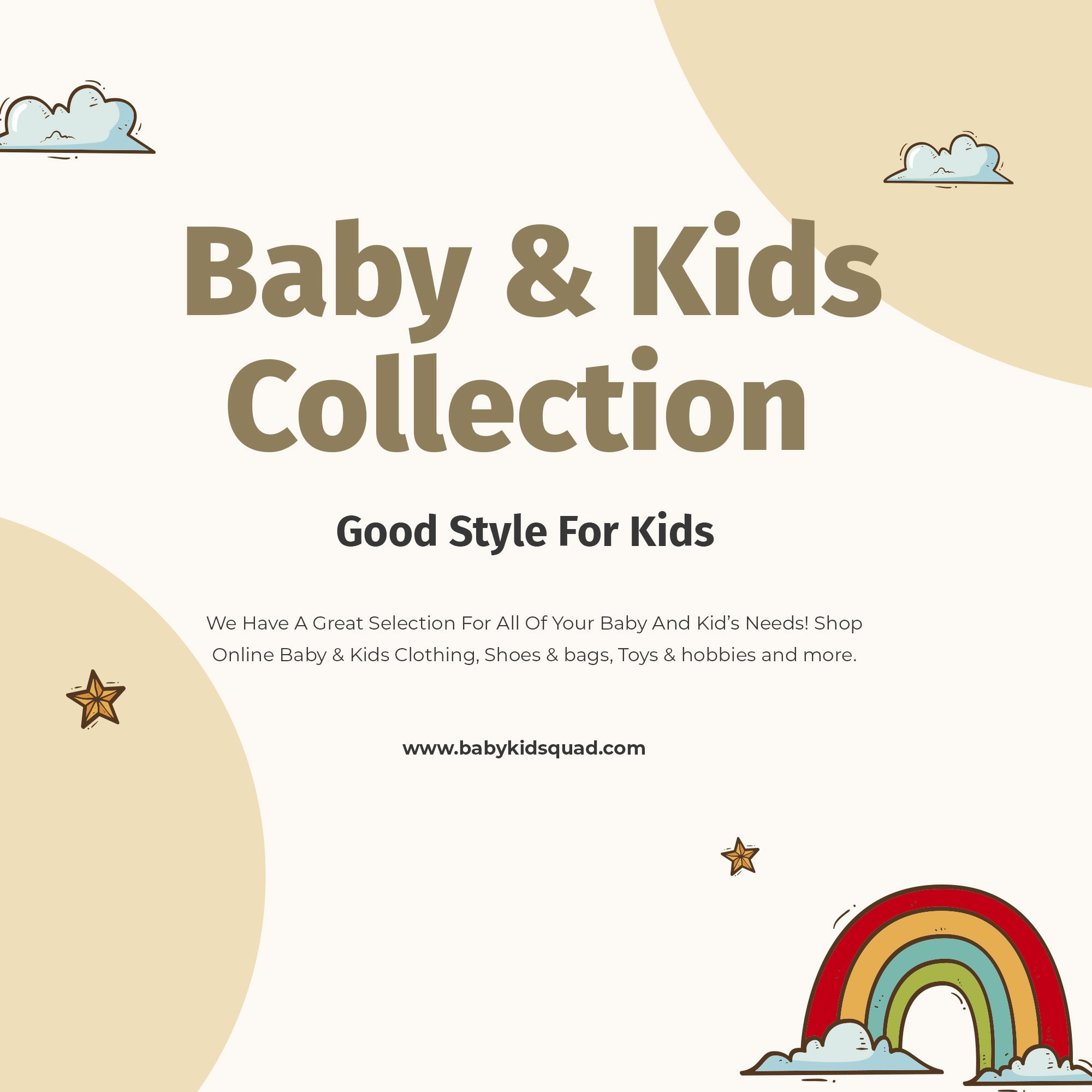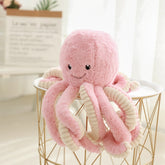How to Make Educational Toys: A Guide for Creative Parents
Table of Contents
- Introduction
- The Importance of Educational Toys
- Types of Educational Toys to Create
- Tips for Making Educational Toys
- A Look at Baby Kid Squad's Educational Products
- Conclusion
- FAQ
Introduction
What if we told you that some of the best learning experiences for our children can come from the simplest materials around the house? In a world where the toy aisle is saturated with high-tech gadgets and flashy plastic toys, many parents are turning back to basics. Recent studies suggest that DIY educational toys not only save money but also foster creativity and critical thinking in children. According to experts in child development, children learn best through play, and what better way to encourage that than by creating engaging, hands-on experiences at home?
At Baby Kid Squad, we understand the importance of combining learning with fun, and we’re here to guide you on how to make educational toys that will not only captivate your child’s imagination but also support their developmental milestones. By the end of this post, you will have a comprehensive understanding of various DIY educational toys, along with practical tips and ideas to get started.
We’ll delve into the significance of educational toys, explore different categories, and provide step-by-step instructions for creating your own. Our aim is to empower you with the knowledge to turn everyday materials into engaging learning tools that can enrich your child's playtime. Whether you are a seasoned DIYer or a beginner, we’ll cover everything you need to know.
Let’s embark on this creative journey together and explore how simple materials can transform into valuable educational resources for our children.
The Importance of Educational Toys
Before we dive into the specifics of how to make educational toys, let’s first understand why they are essential. Educational toys serve multiple purposes:
- Cognitive Development: They stimulate problem-solving skills and critical thinking. Toys that require manipulation, such as puzzles or building blocks, encourage children to think strategically.
- Motor Skills: Many DIY toys can enhance fine and gross motor skills. Activities like stacking, sorting, and assembling help children develop hand-eye coordination and dexterity.
- Social Skills: Playing with educational toys often involves interaction with peers or siblings, fostering teamwork, sharing, and communication skills.
- Emotional Development: Engaging in creative play can help children express their emotions and cope with challenges, promoting emotional intelligence.
- Creativity and Imagination: Educational toys encourage imaginative play, allowing children to explore different roles and scenarios, which is crucial for cognitive growth.
By making educational toys ourselves, we can tailor them to our children’s specific interests and developmental stages, ensuring they receive the most benefit from their play experiences.
Types of Educational Toys to Create
When we think of educational toys, they can fall into several categories. Each type offers unique learning opportunities, and we can make them using everyday materials. Here are some popular types of educational toys to consider:
1. Sensory Toys
Sensory toys are designed to engage a child's senses—sight, sound, touch, smell, and taste. They are particularly beneficial for younger children and those with sensory processing issues.
DIY Sensory Bottles
Materials Needed:
- Clear plastic bottles or jars
- Fillers (such as rice, beads, glitter, or water)
- Food coloring (optional)
- Strong adhesive
Instructions:
- Fill the bottle with various fillers, ensuring they are colorful and varied.
- If using water, add a few drops of food coloring for an exciting visual effect.
- Seal the lid tightly with adhesive to prevent spills.
- Encourage your child to shake and explore the bottle, observing how the contents interact.
2. Building and Construction Toys
Building toys help develop spatial awareness, problem-solving skills, and creativity.
DIY Cardboard Building Blocks
Materials Needed:
- Cardboard boxes (different sizes)
- Tape or glue
- Scissors
Instructions:
- Cut cardboard boxes into various shapes (cubes, rectangles, etc.).
- Ensure the edges are smooth to prevent injury.
- Decorate the blocks with paint or stickers for added fun.
- Encourage your child to create structures, promoting imaginative play and engineering skills.
3. Educational Games
Games can be a fun way to teach various subjects, from math to language arts.
DIY Memory Game
Materials Needed:
- Cardstock or cardboard
- Markers or images
- Scissors
Instructions:
- Cut out square pieces of cardstock.
- Draw or paste matching images on pairs of cards.
- Shuffle the cards and lay them face down.
- Take turns flipping over two cards at a time, promoting memory skills and concentration.
4. Art and Craft Toys
Art encourages self-expression and creativity while developing fine motor skills.
DIY Art Supplies
Materials Needed:
- Old crayons or broken chalk
- Paper, canvas, or cardboard
Instructions:
- Melt down old crayons in molds to create new shapes.
- Provide various surfaces for drawing, including recycled materials.
- Encourage your child to create artwork, promoting creativity and self-expression.
5. Role-Playing Toys
Role-playing encourages social skills and imaginative play.
DIY Dress-Up Costumes
Materials Needed:
- Old clothes, fabric, or accessories
- Scissors
- Sewing kit (optional)
Instructions:
- Gather old clothes and fabric that can be repurposed.
- Cut and sew (if necessary) to create fun costumes.
- Encourage your child to dress up and act out different scenarios, promoting social skills and creativity.
Tips for Making Educational Toys
Creating educational toys doesn’t have to be complex or expensive. Here are some tips to keep in mind:
- Involve Your Child: Let your child help in the creation process. This not only makes it a bonding experience but also teaches them valuable skills.
- Use Recyclable Materials: Look for items around the house that can be repurposed, such as cardboard boxes, old clothes, or plastic containers.
- Focus on Safety: Always ensure that the materials used are safe for your child’s age group. Avoid small parts for younger children to prevent choking hazards.
- Tailor to Interests: Consider your child’s interests when creating toys. If they love animals, for example, create toys that incorporate animal figures or themes.
- Encourage Open-Ended Play: Create toys that can be used in multiple ways. This encourages creativity and allows children to explore different scenarios.
A Look at Baby Kid Squad's Educational Products
At Baby Kid Squad, we are passionate about making parenting easier and more stylish. Our curated collections of toys and educational materials are designed to foster creativity and support developmental milestones. Whether you’re looking for high-quality toys, engaging games, or stylish accessories, we have everything you need to make learning fun.
For instance, our Toys & Hobbies collection features a wide variety of developmental toys that encourage exploration and creativity. From engaging puzzles to creative hobbies, we have thoughtfully selected products that nurture children's growth and learning. Explore our collection here.
Conclusion
Making educational toys is not just a fun activity; it's an investment in our children's development. By creating engaging, hands-on learning experiences, we nurture their creativity, problem-solving abilities, and social skills. Our DIY projects can serve as valuable tools in fostering a love for learning that lasts a lifetime.
As you embark on your journey to create educational toys, remember that the most important aspect is the joy and engagement it brings to your child's playtime. By integrating the ideas and tips we've shared, you can turn everyday materials into invaluable learning tools.
Let’s encourage our children to explore, learn, and grow through play. Together, we can create a world of opportunities, sparking creativity and curiosity in every child.
FAQ
What age group is best for DIY educational toys?
DIY educational toys can be tailored for various age groups. For infants and toddlers, focus on sensory toys. For preschoolers and older children, building toys, games, and role-playing toys can be more engaging.
How can I ensure the safety of DIY toys?
Always use non-toxic materials and ensure that any small parts are safe for the child’s age group. Regularly check the toys for wear and tear to prevent accidents.
Can DIY educational toys be as effective as store-bought ones?
Absolutely! Many DIY toys can provide the same, if not more, educational value as store-bought toys. The key is to focus on creativity and learning outcomes.
How do I encourage my child to play with DIY toys?
Engage your child in the creation process and showcase the toys in a fun and inviting way. Play alongside them to show enthusiasm and encourage their imagination.
Where can I find more ideas for DIY educational toys?
There are plenty of resources online, including parenting blogs, craft websites, and social media platforms. Additionally, our Baby Kid Squad blog regularly features creative ideas and tips for parents.
By embracing the art of DIY educational toys, we can create lasting memories and learning experiences for our children, all while saving money and promoting sustainability. Happy crafting!









